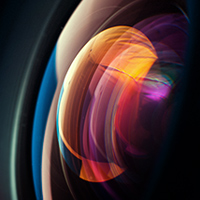Abstract
Optical switching and logic devices require a large optical nonlinearity (absorptive or refractive) per absorbed photon (or injected charge), combined with a rapid excitation recovery time. The accumulated absorptive (or index) changes during a laser pulse are proportional to the shorter of either the pulse duration or the excitation lifetime. Optimally the two are matched, in which case the switching energy (power-time product) is determined primarily by the change in absorption coefficient (or refractive index) per photogenerated carrier-pair. Any mechanism, material or structure that will enhance the per-carrier nonlinear response is therefore of considerable interest. Device structures (such as self-electrooptic effect devices (SEED’s), hetero n-i-p-i’s, and piezoelectric multiple quantum wells (MQWs)) that rely on the screening of applied, built-in or intrinsic fields are purported to have large per carrier nonlinearities primarily because the carriers generated in a single well can escape and move to screen multiple wells. As a class, we refer to the nonlinearities in such structures as Stark-shifted nonlinearities, since they arise from a reduction in the quantum-confined Stark effect (QCSE) as the field is screened by the photogenerated charge.
© 1995 Optical Society of America
PDF ArticleMore Like This
A. N. Cartwright, X. R. Huang, and Arthur L. Smirl
JWB3 Quantum Optoelectronics (QOE) 1995
X. R. Huang, D. R. Harken, A. N. Cartwright, Arthur L. Smirl, J. L. Sanchez-Rojas, A. Sacedon, E. Calleja, and E. Muñoz
CFB5 Conference on Lasers and Electro-Optics (CLEO:S&I) 1995
H. Yoshida, T. Tezuka, Y. Ashizawa, and M. Nakamura
P49 Conference on Lasers and Electro-Optics/Pacific Rim (CLEO/PR) 1995

